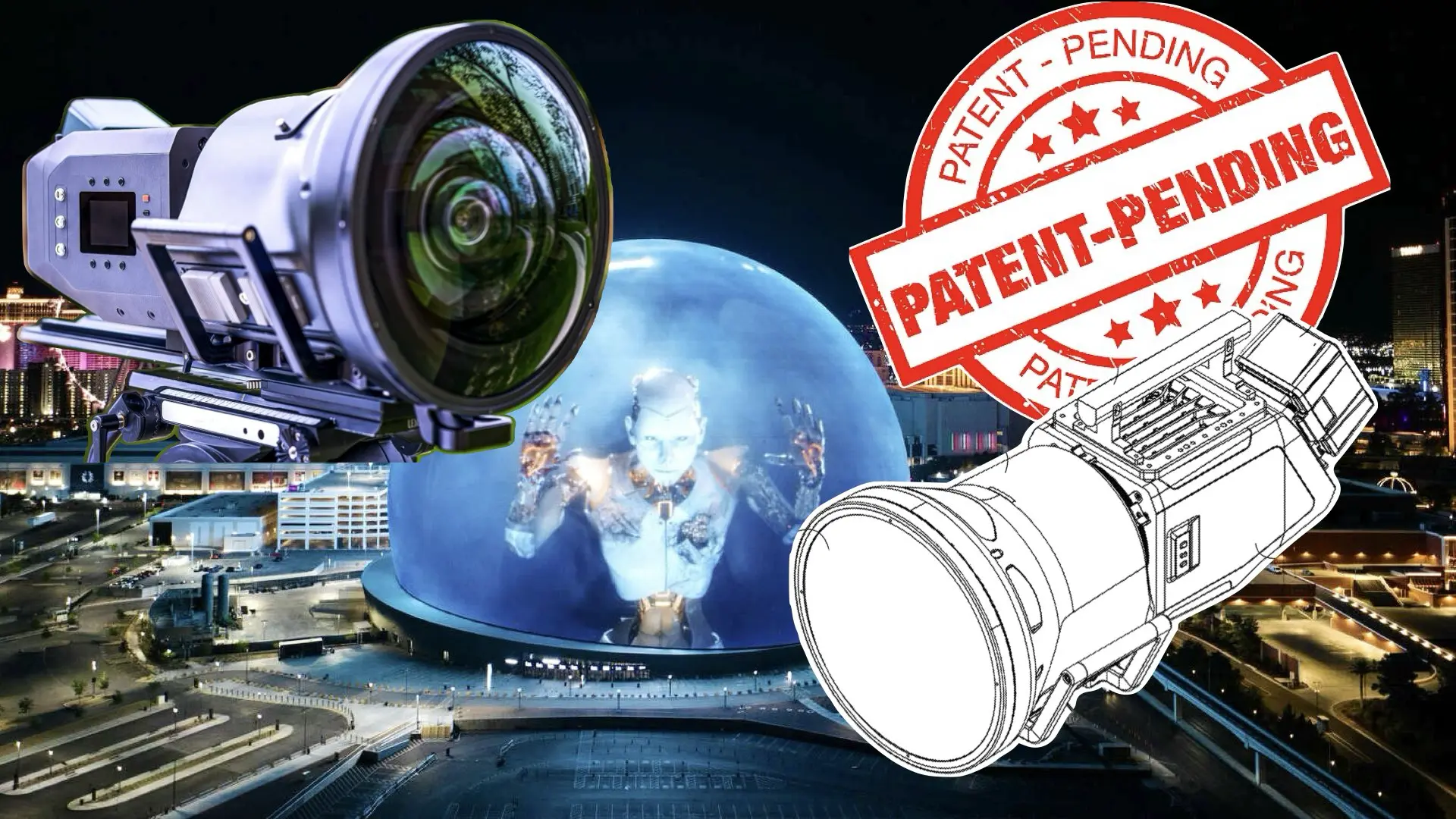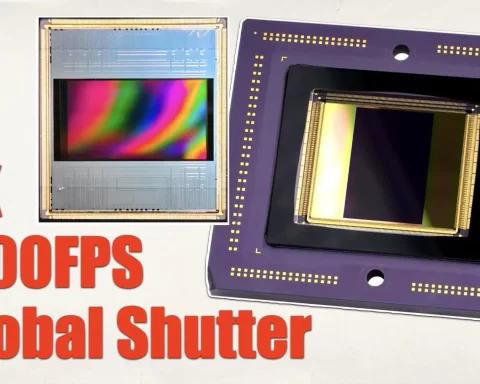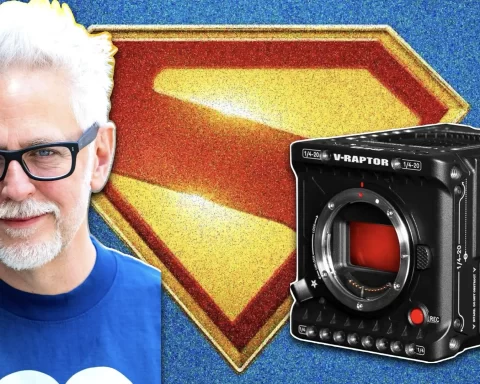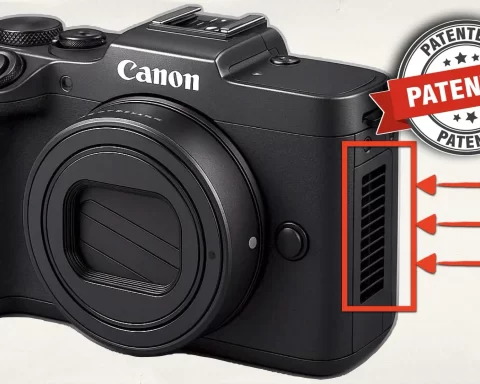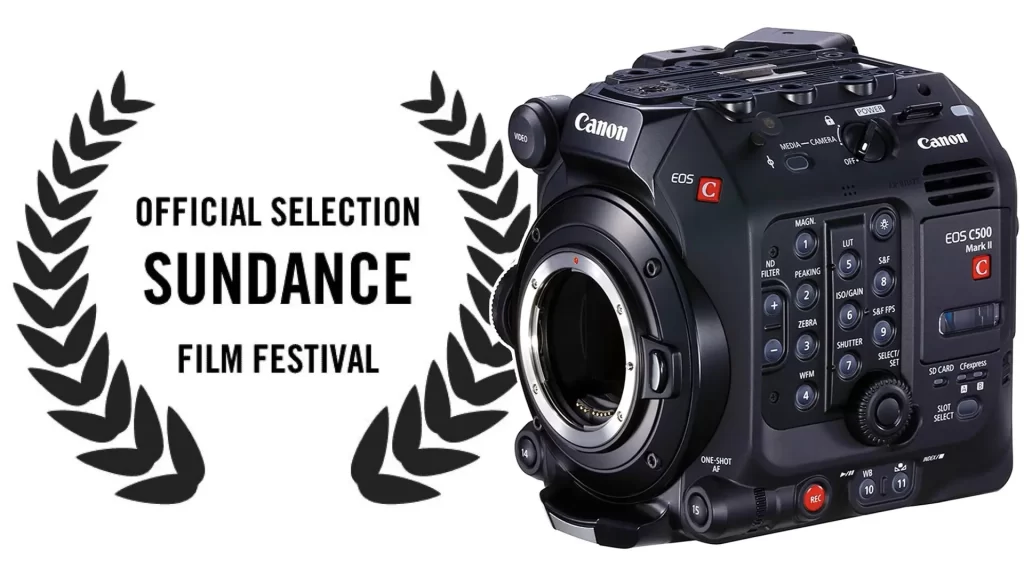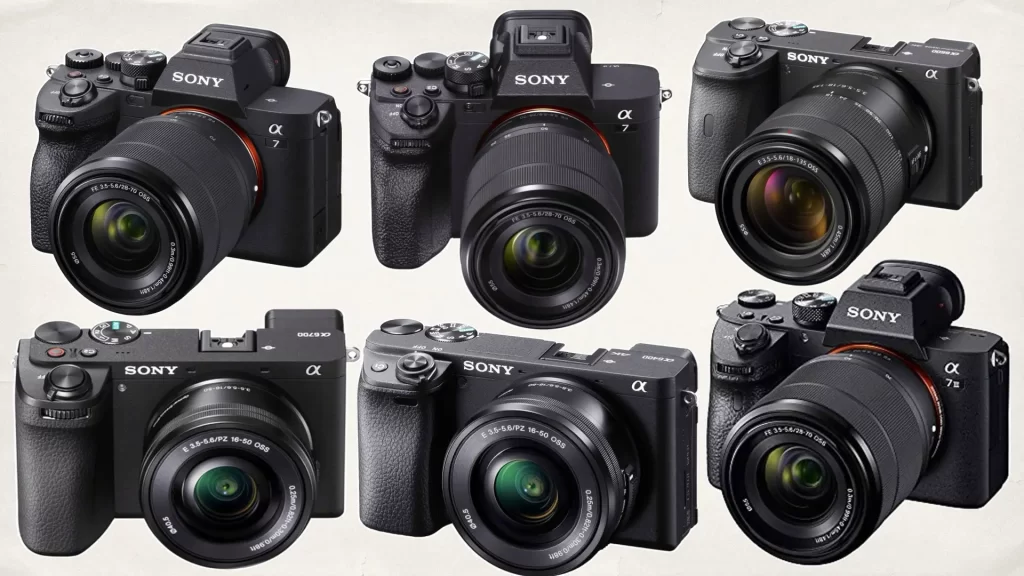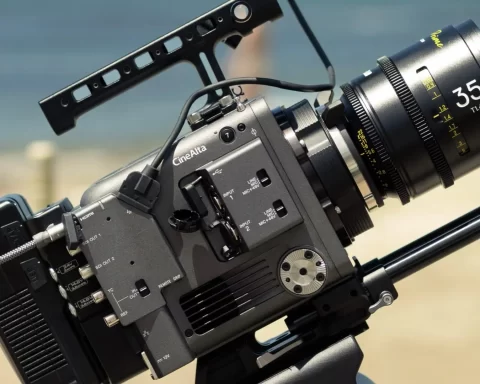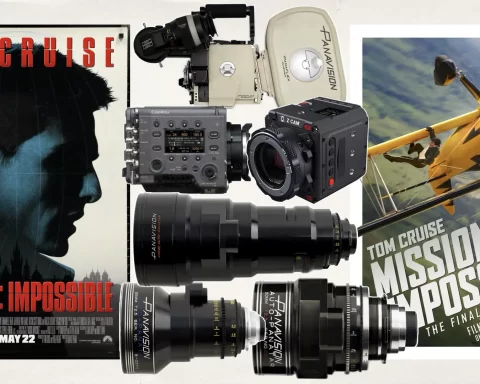The Las Vegas Sphere, with its massive 16K LED display, demands an unprecedented level of image quality. This necessity has given rise to the Big Sky camera, a large-format cinema camera specifically engineered for Sphere’s immersive visual experiences. A recently published patent (US 12,219,231) provides a deep dive into the technology that powers this revolutionary camera system. This article will break down the patent in detail, analyze its significance for large sensor cinema technology, and explore its implications for the future of filmmaking.
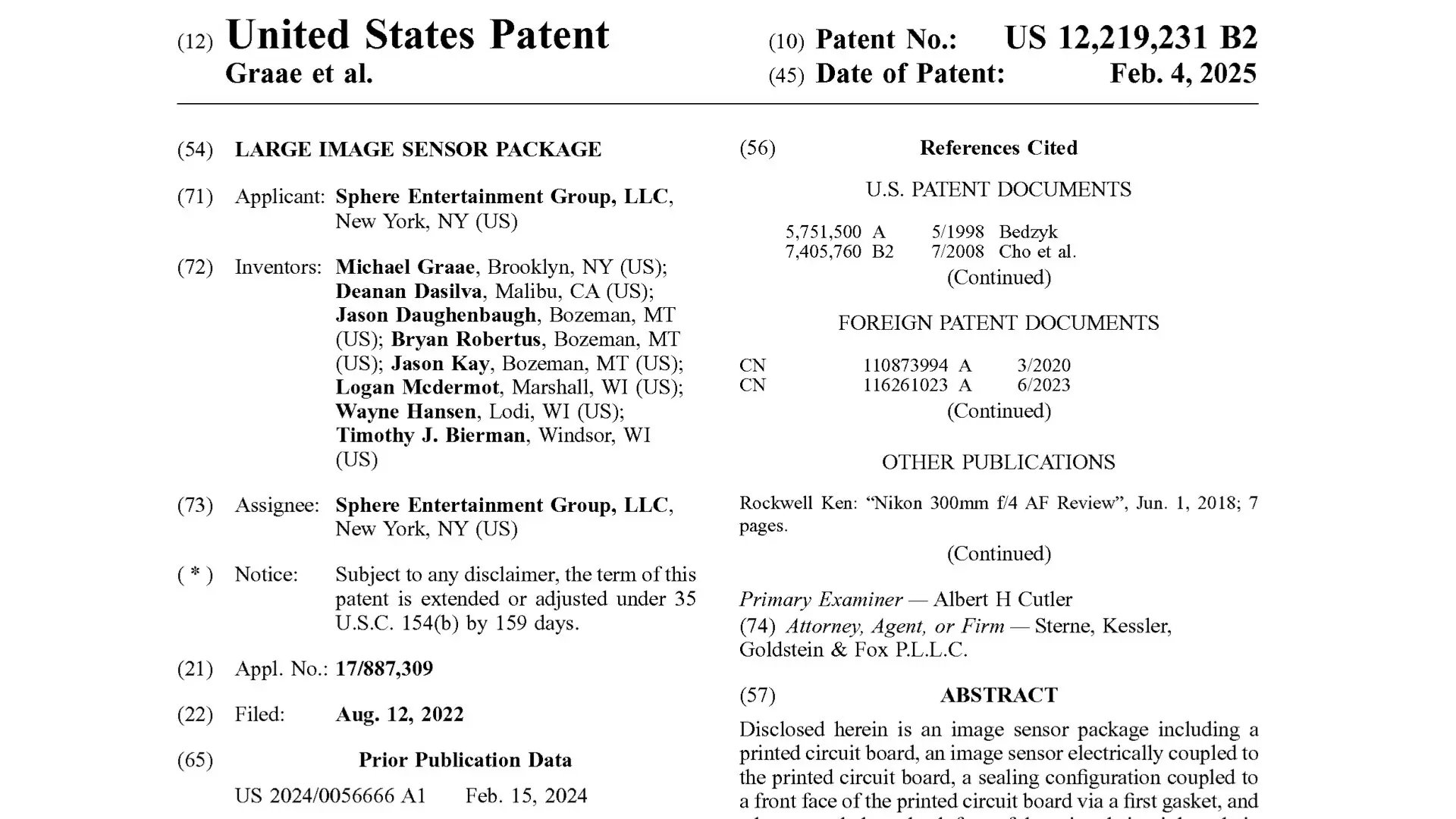
Understanding the Patent: The Core Technology
The patent describes a next-generation ultra-high-resolution large sensor camera developed to meet the unique requirements of ultra-wide, high-resolution immersive displays such as the Las Vegas Sphere. The most notable features of this system include:
1. A Gigantic Image Sensor
The patent outlines a massive 316-megapixel CMOS sensor measuring approximately 9.92 cm × 8.31 cm, which is higher than a 65mm-sized sensor with extreme resolution capabilities. This allows the camera to capture imagery at up to 18K resolution. To put this into perspective, high-end cinema cameras such as the ARRI ALEXA 65 and RED V-RAPTOR XL 8K use large sensors, but their resolutions pale in comparison. Even the Sony VENICE 2 maxes out at 8.6K resolution, while the Big Sky camera nearly doubles that. Read more here: This is the Sensor of the Big Sky Camera
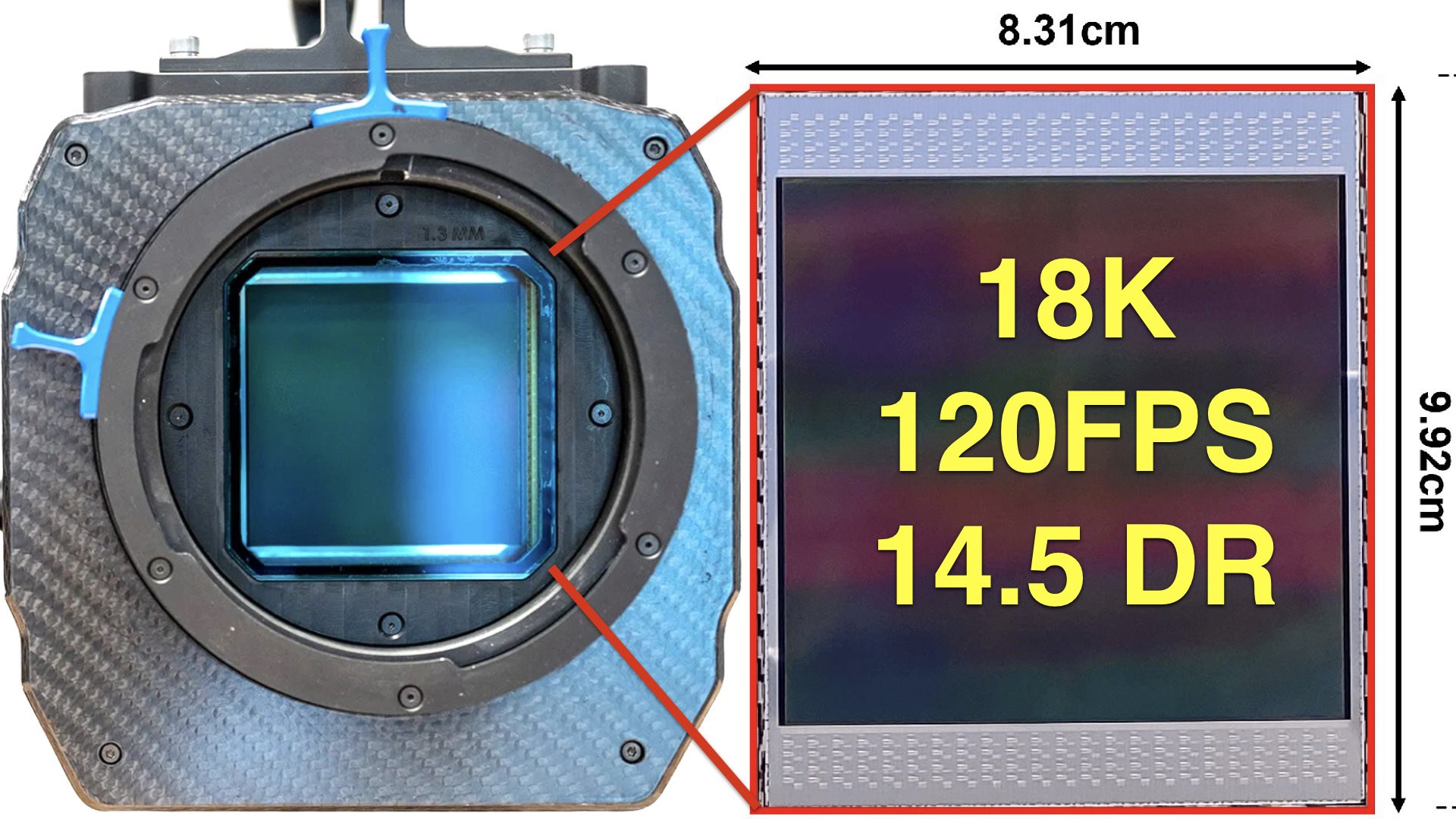
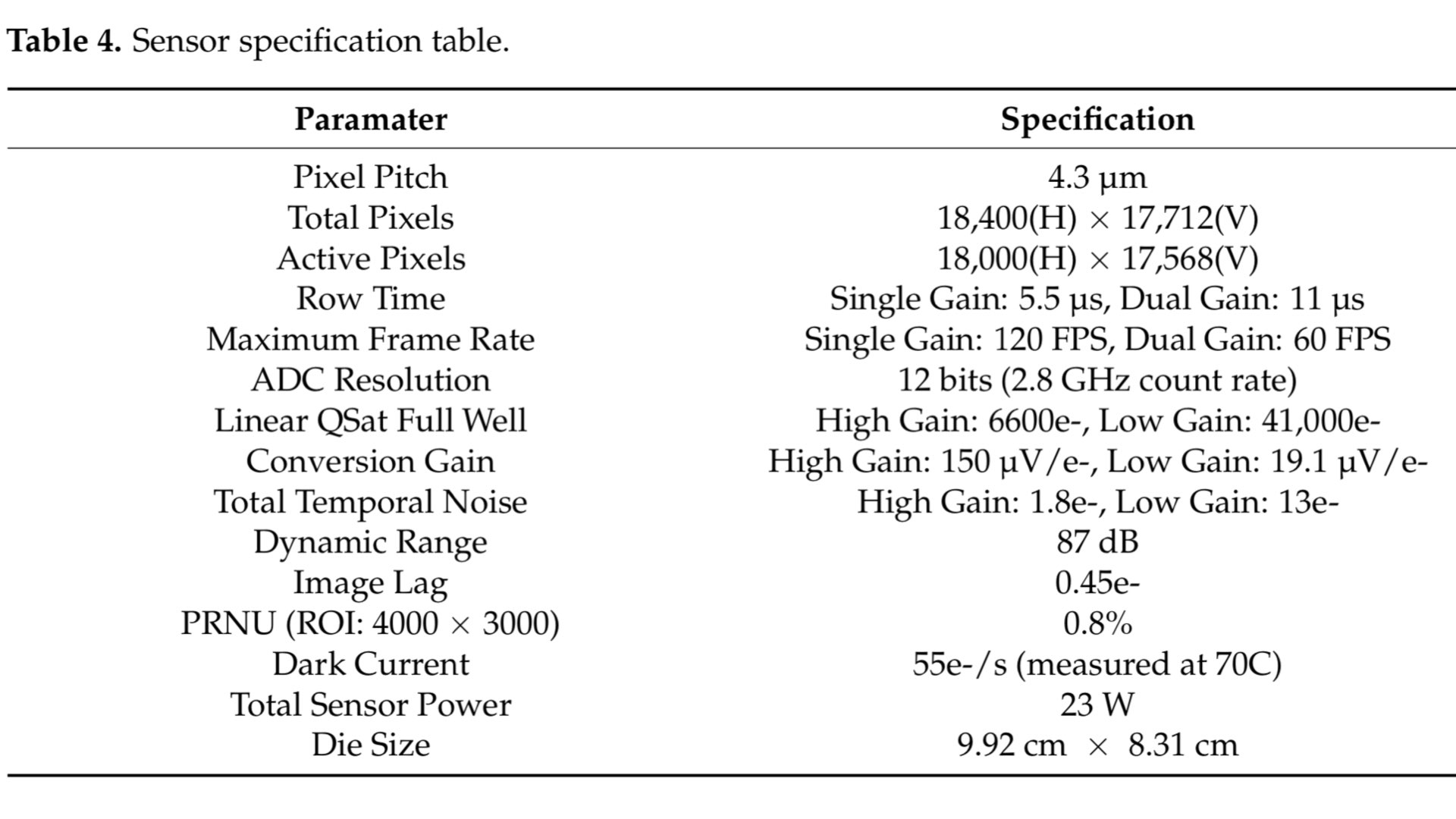
2. Extreme Dynamic Range and Frame Rate Capabilities
The camera is designed to deliver 14.5 stops of dynamic range, ensuring excellent shadow and highlight retention, which is crucial for large-screen projection. The system also supports frame rates of up to 120 FPS, allowing for smooth motion capture, slow-motion playback, and seamless integration with the Sphere’s high-refresh-rate display.
3. Staggering Data Output at 32 Gigabits Per Second
One of the most groundbreaking aspects of the patent is the camera’s ability to handle massive data rates. The system records at a whopping 32 Gbps, necessitating specialized data pipelines, storage solutions, and post-production workflows. Read mre: Shooting a Movie on a Data Rate of 32 Gigabits Per Second
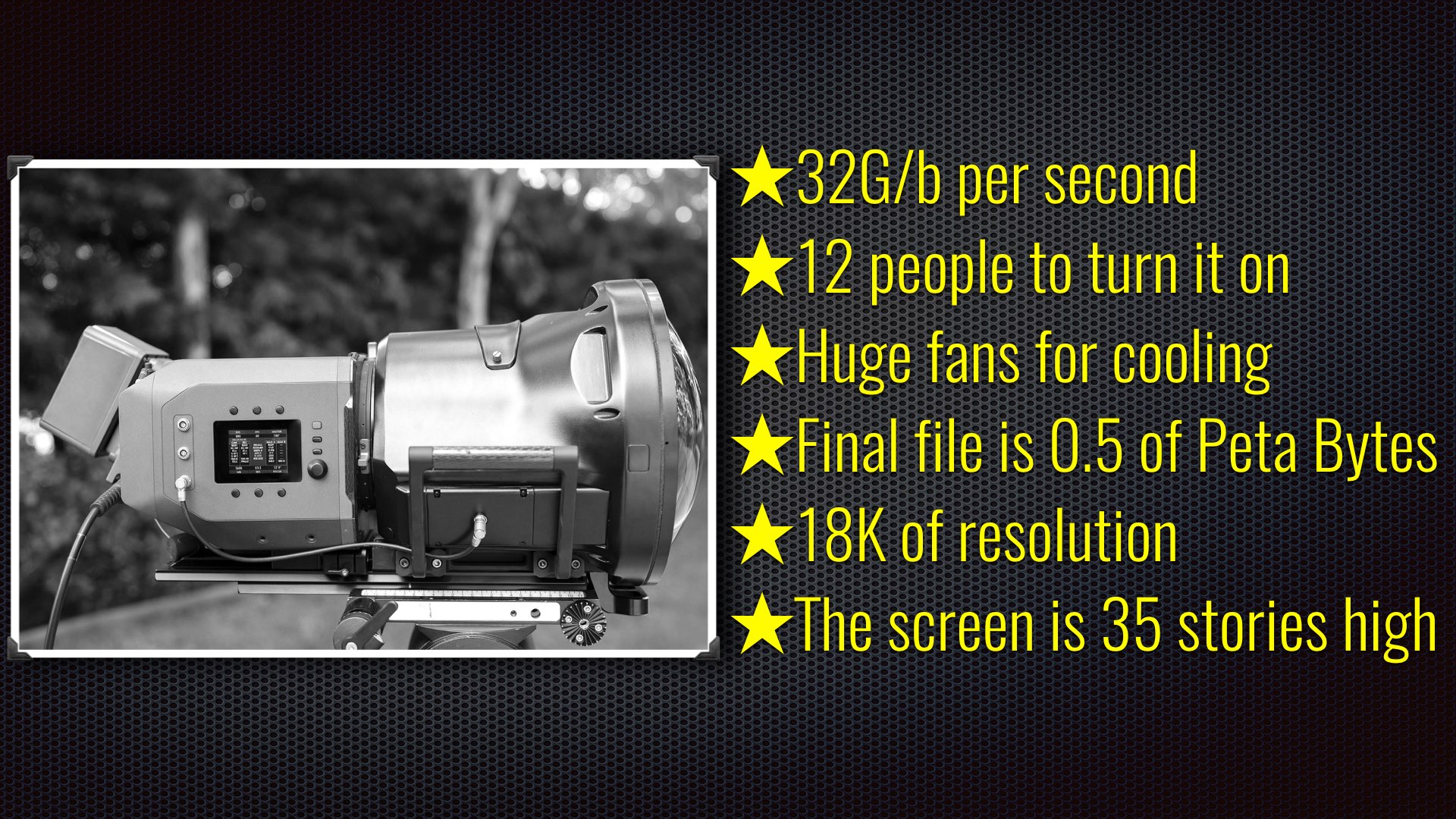
4. Custom Lens and Optics for Ultra-Wide Projection
The patent also describes an optical system designed specifically for ultra-wide, immersive projection formats. This includes:
- Custom spherical lenses that minimize distortion.
- High-resolution glass capable of resolving 18K images.
- Adaptive focus mechanisms to maintain clarity across the frame.
5. Advanced Cooling and Power Management
Given the high-resolution sensor and immense data throughput, the camera incorporates a liquid-cooled thermal management system to prevent overheating. Additionally, it employs a modular power supply to handle extreme processing loads efficiently.
6. Proprietary Image Processing Pipeline
The patent details an advanced image signal processor (ISP) that is custom-built for handling 18K imagery. This includes:
- Real-time debayering and HDR processing.
- AI-powered noise reduction and sharpening algorithms.
- Color science optimized for large-format projection.
7. High-Speed Storage and Data Transfer
With a data rate of 32 Gbps, conventional storage solutions would be insufficient. The patent describes a high-bandwidth SSD array integrated directly into the camera body, along with an optical fiber-based data transfer system for seamless offloading of footage to external storage.
8. Modular and Expandable Design
The patent also emphasizes modularity, allowing users to swap out:
- Different lens mounts (PL, EF, and proprietary wide-format mounts).
- Multiple recording formats, including RAW, ProRes, and proprietary ultra-high-bitrate codecs.
- Custom sensor readout modes for different aspect ratios and resolutions.
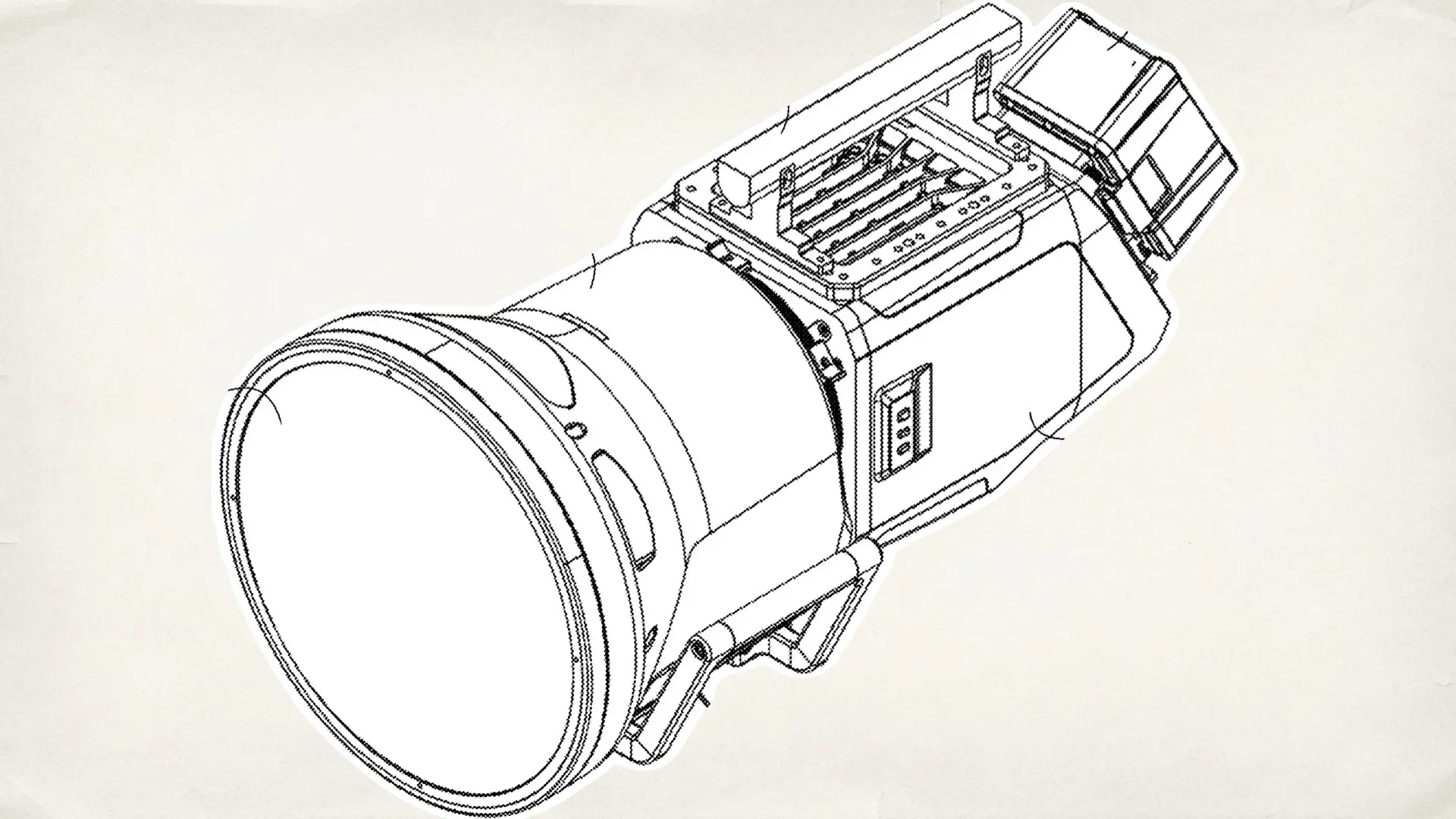
Merely using materials with substantially similar coefficients of thermal expansion for adjacent components in the image sensor package is often not enough to preserve the integrity of various components and to ensure optimal operation of the image sensor package. Issues of different thermal expansion rates between adjacent components are especially prevalent in large format camera systems because components are larger in size, and any potential thermal expansion of a component will more significantly impact those adjacent components. Therefore, additional mechanisms are needed to accommodate for different thermal expansion rates of adjacent components during operation.
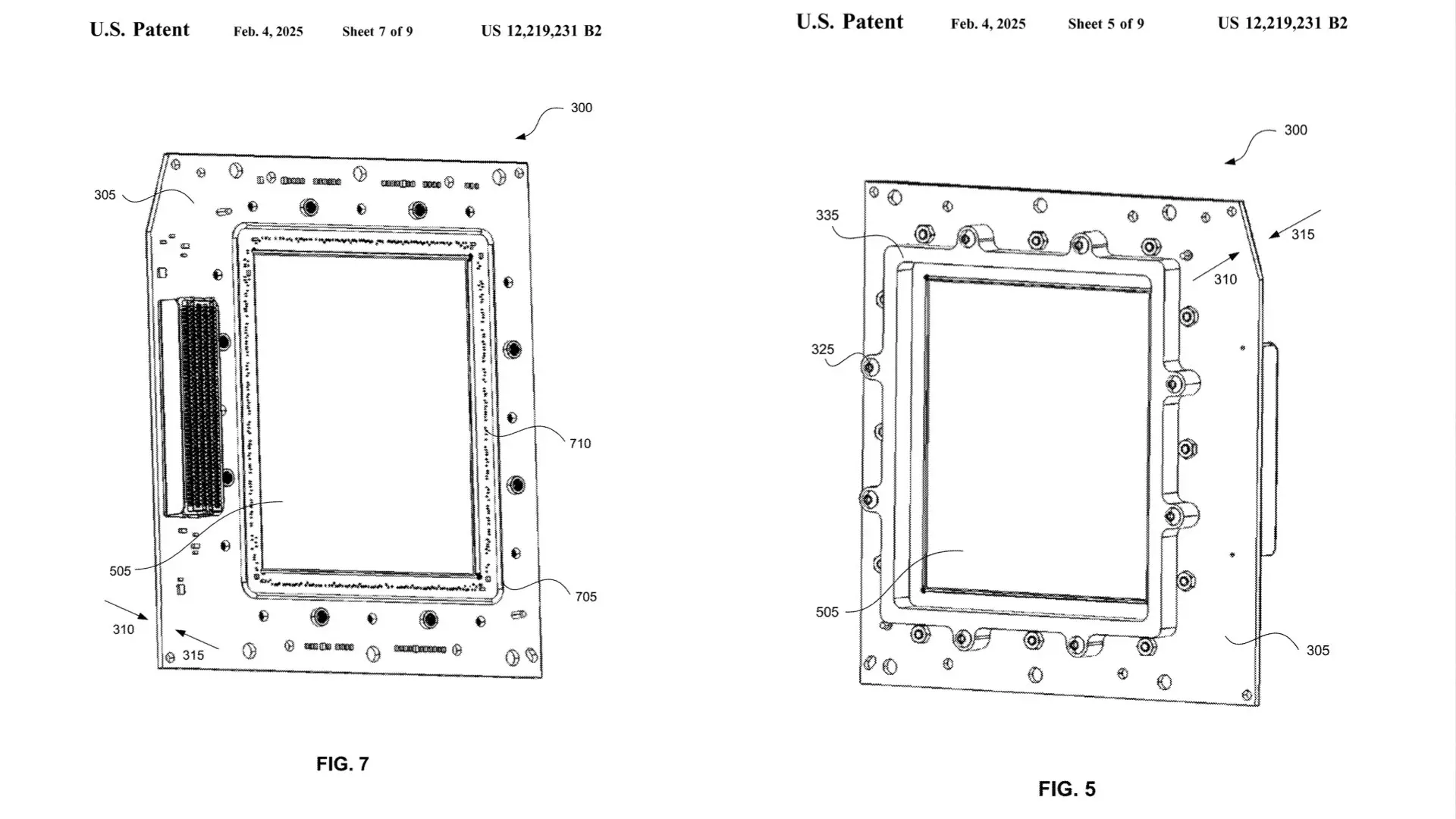
Implications for Large-Sensor Cinema Technology
The technology described in this patent signifies a major leap for large sensor cinema cameras. Let’s examine how it pushes the boundaries of high-end filmmaking.
A New Standard for High-Resolution Filmmaking
Until now, IMAX cameras have been the gold standard for large-format cinematography. However, the Big Sky camera surpasses them in resolution, frame rate, and dynamic range, making it a new benchmark for immersive cinema. Read more: Sphere’s “Postcard from Earth” Review – An IMAX Experience on Steroids
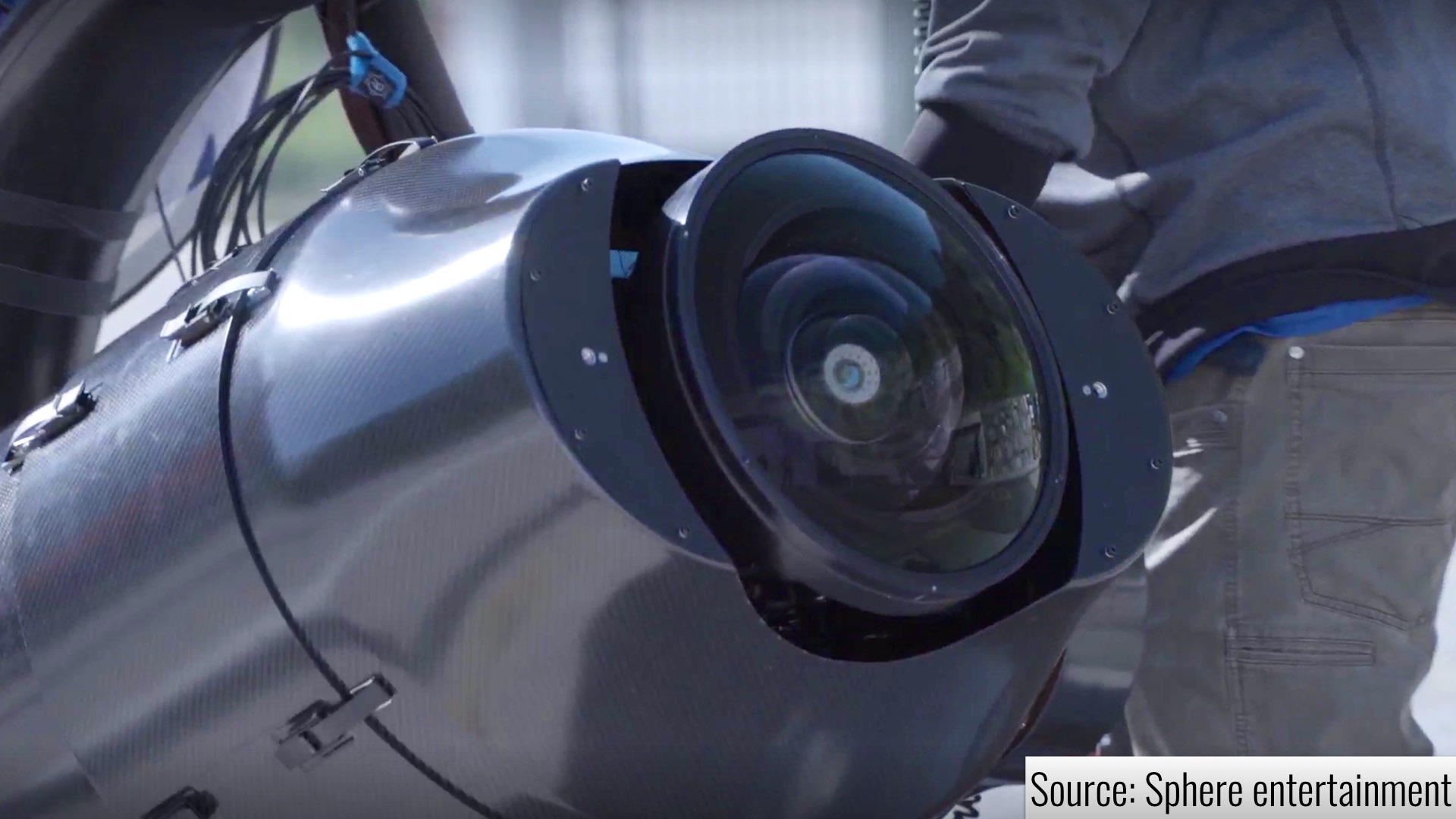
The Future of Live and Concert Filmmaking
The Big Sky camera was used to capture U2’s residency concert at the Sphere, which set a new precedent for live event cinematography. The camera’s ability to shoot at extreme resolutions and frame rates enables live productions to be projected at an unmatched level of detail. Read more: U2’s Concert Shot on the Big Sky Cinema Camera
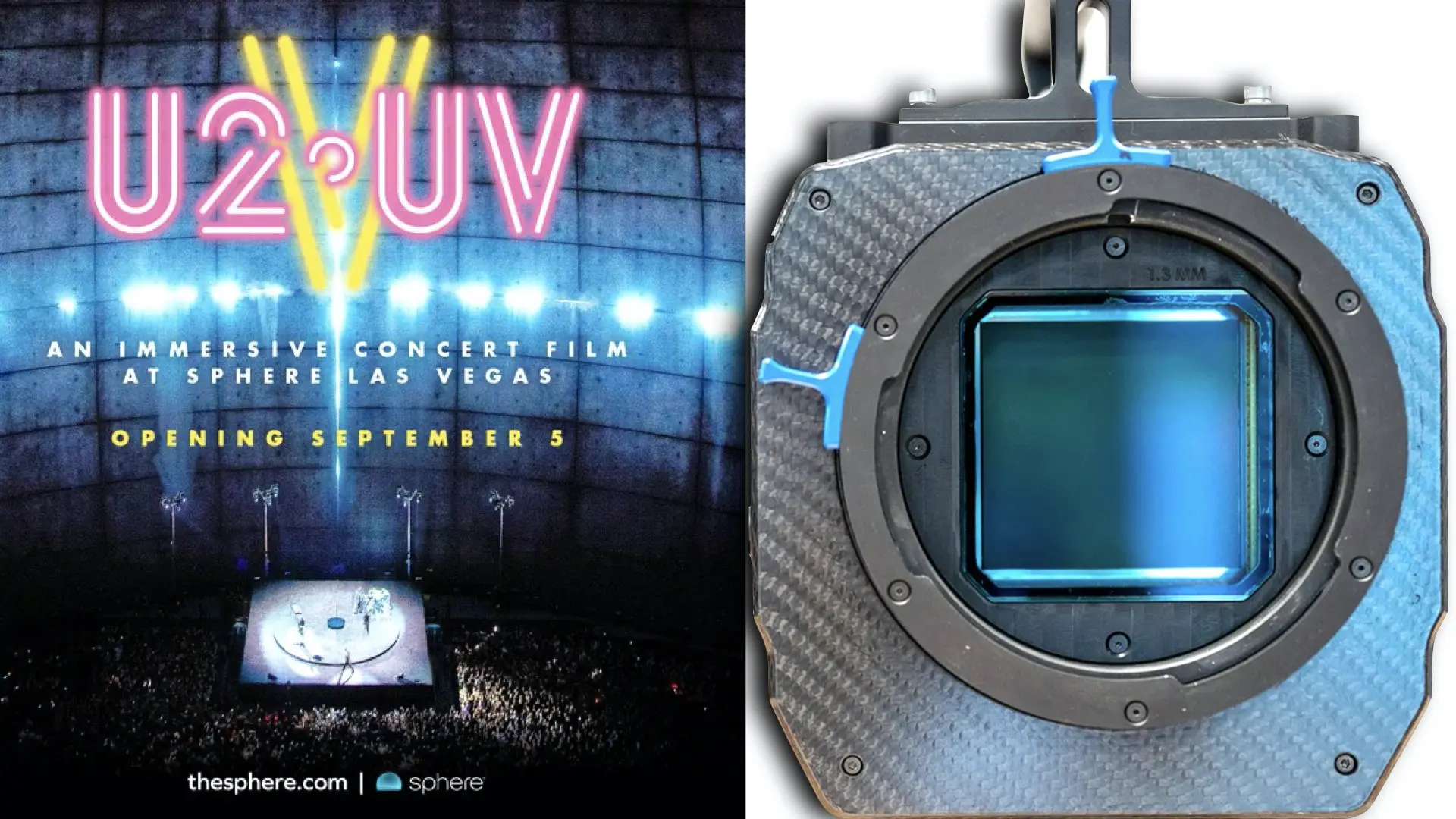
Reimagining the Future of Cinema
This patent is also a glimpse into the future of cinematic storytelling in immersive environments. Recently, there has been a push toward 16K and 18K filmmaking, with projects such as The Wizard of Oz 16K Sphere Project exploring what’s possible in this new format. Read more: The Wizard of Oz 16K Sphere Project – Reimagining Cinema with Cutting-Edge Technology
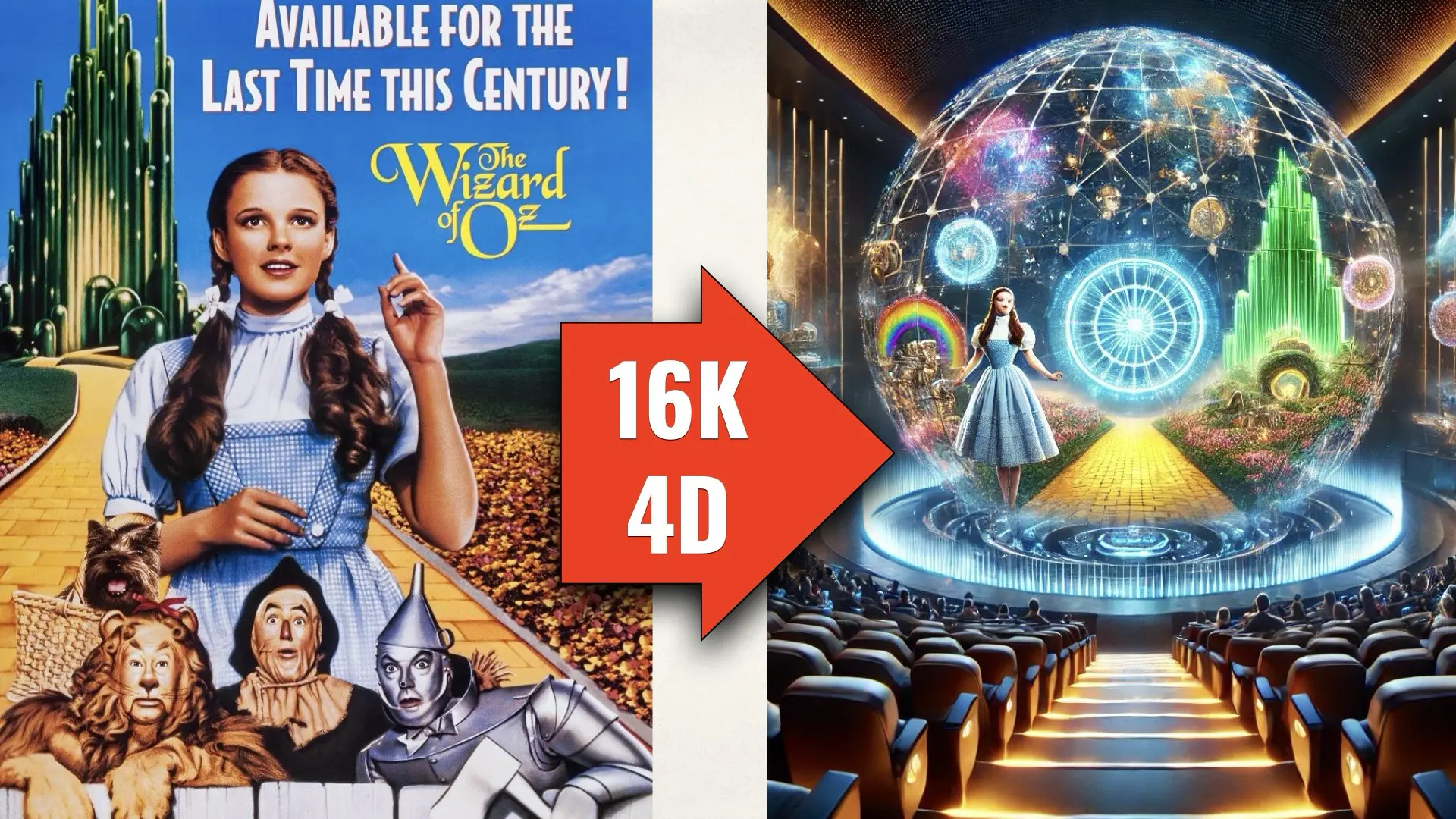
Conclusion
The patent behind the Big Sky camera represents one of the most significant advancements in large sensor cinema technology. With its gigantic 316MP sensor, 18K resolution, 120 FPS capability, ultra-high data rate, and modular design, this camera is rewriting the rules of high-end cinematography. As immersive venues like the Las Vegas Sphere become more prevalent, the demand for such cutting-edge camera systems will only grow. This development signifies the beginning of a new era in filmmaking, where ultra-large sensors and extreme resolutions become the new norm. As technology progresses, we can expect more innovations in sensor design, data pipelines, and optical systems, all driven by the demand for immersive, next-generation cinematic experiences.

